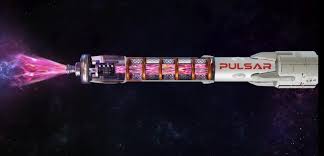
Breaking News
 Rise and Fall of the Neuralink Society
Rise and Fall of the Neuralink Society
 Tony Blair is back in Lebanon to enforce the Zionist/Trump expansionist plan
Tony Blair is back in Lebanon to enforce the Zionist/Trump expansionist plan
 My First Bitcoin Goes Global, Will Empower Educators Worldwide
My First Bitcoin Goes Global, Will Empower Educators Worldwide
 GAME OVER! Congress EXPOSED for abusing security clearance to ENRICH THEMSELVES!!
GAME OVER! Congress EXPOSED for abusing security clearance to ENRICH THEMSELVES!!
Top Tech News
 New Gel Regrows Dental Enamel–Which Humans Cannot Do–and Could Revolutionize Tooth Care
New Gel Regrows Dental Enamel–Which Humans Cannot Do–and Could Revolutionize Tooth Care
 Researchers want to drop lab grown brains into video games
Researchers want to drop lab grown brains into video games
 Scientists achieve breakthrough in Quantum satellite uplink
Scientists achieve breakthrough in Quantum satellite uplink
 Blue Origin New Glenn 2 Next Launch and How Many Launches in 2026 and 2027
Blue Origin New Glenn 2 Next Launch and How Many Launches in 2026 and 2027
 China's thorium reactor aims to fuse power and parity
China's thorium reactor aims to fuse power and parity
 Ancient way to create penicillin, a medicine from ancient era
Ancient way to create penicillin, a medicine from ancient era
 Goodbye, Cavities? Scientists Just Found a Way to Regrow Tooth Enamel
Goodbye, Cavities? Scientists Just Found a Way to Regrow Tooth Enamel
 Scientists Say They've Figured Out How to Transcribe Your Thoughts From an MRI Scan
Scientists Say They've Figured Out How to Transcribe Your Thoughts From an MRI Scan
 Calling Dr. Grok. Can AI Do Better than Your Primary Physician?
Calling Dr. Grok. Can AI Do Better than Your Primary Physician?
2 MW Nuclear Fusion Propulsion in Orbit Demo of Components in 2027

The Startup Pulsar Fusion is proposing a 2 Megawatt nuclear fusion orbital components for 2027. Pulsar has now proceeded to phase 3, the manufacture of the initial test unit. Static tests are to begin in 2025 followed by an In Orbit Demonstration (IOD) of the core technology components in 2027.
With Sunbird in Orbit: A spacecraft launches to LEO (~9.4 km/s), docks with a Sunbird, and then the Sunbird's fusion propulsion handles the rest. 3–5 km/s to Mars or 6–10 km/s to Jupiter. The initial launch vehicle only needs enough delta-V to reach orbit, not the full interplanetary trip.

 Unbanked In A Connected World
Unbanked In A Connected World

